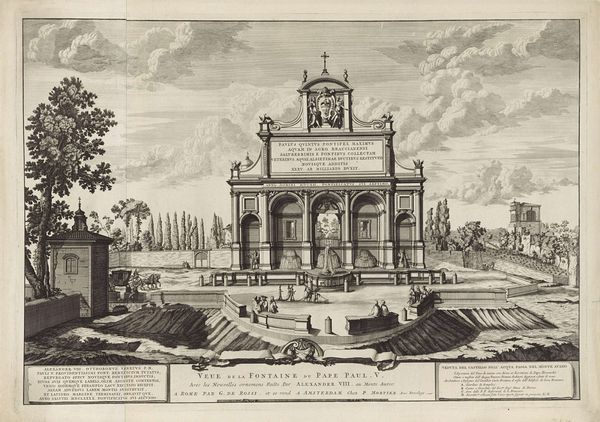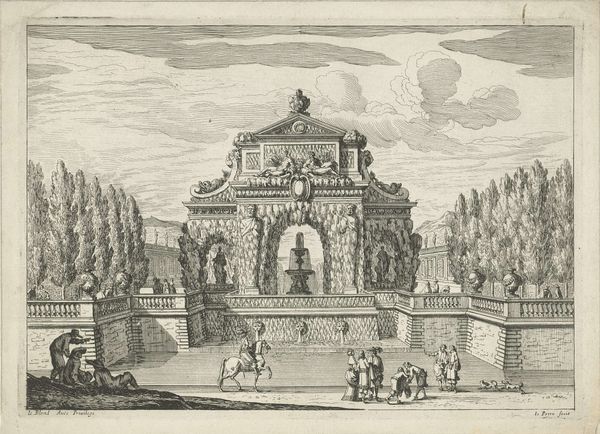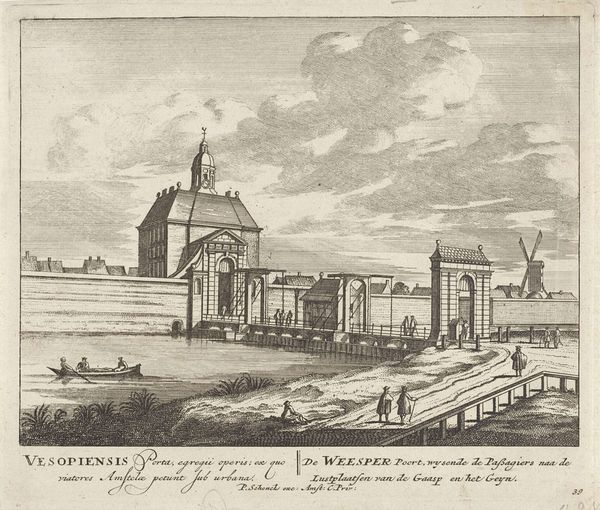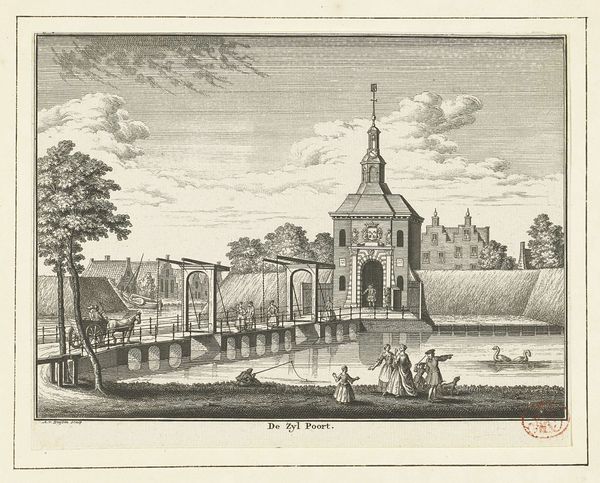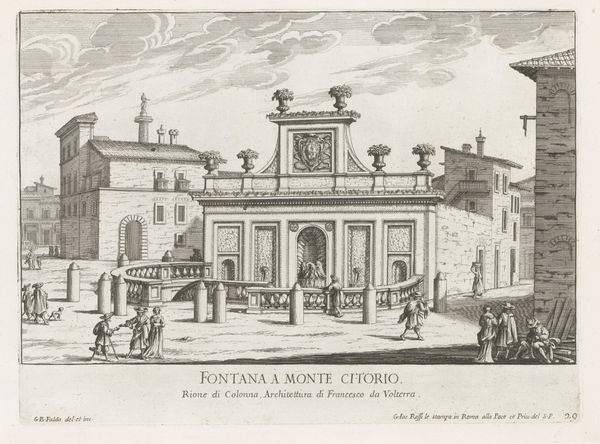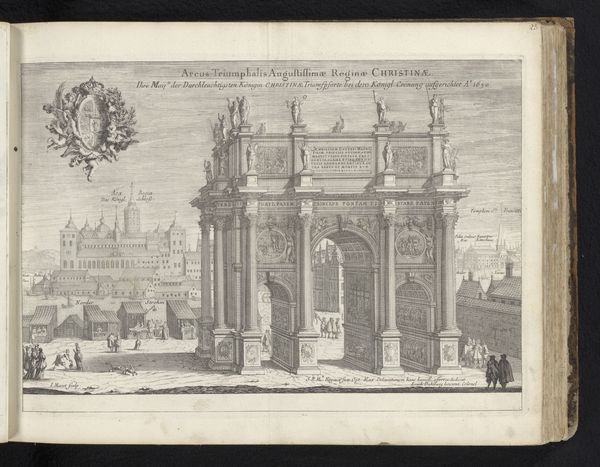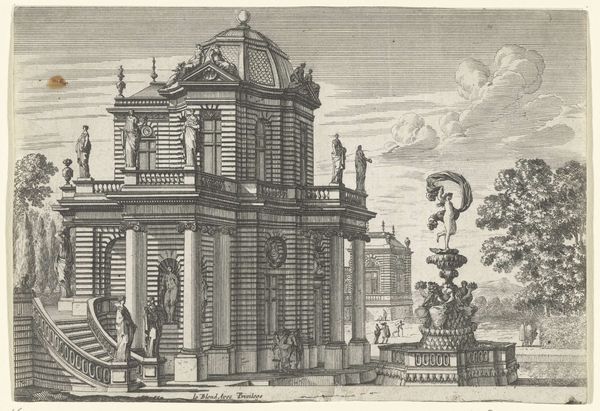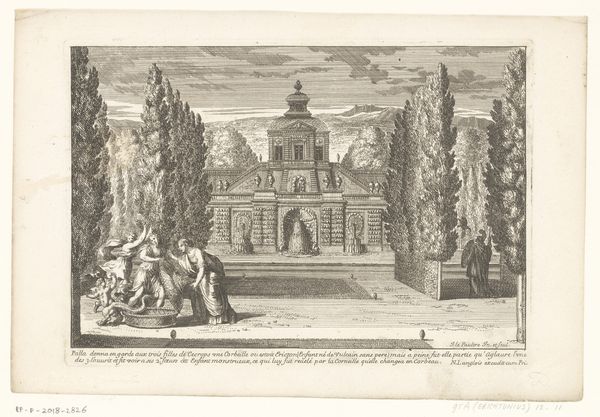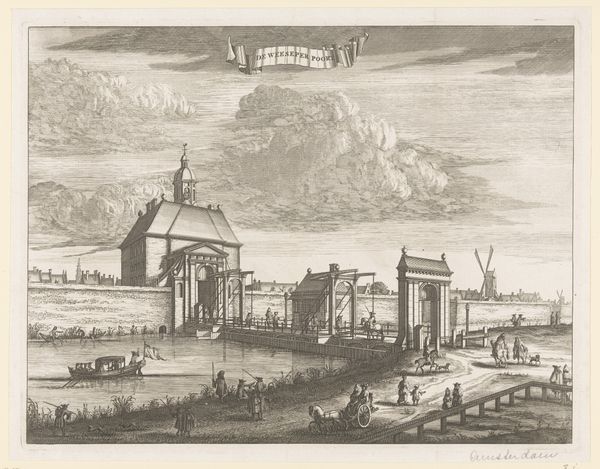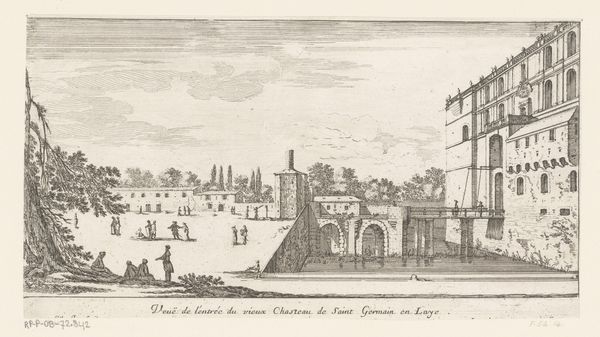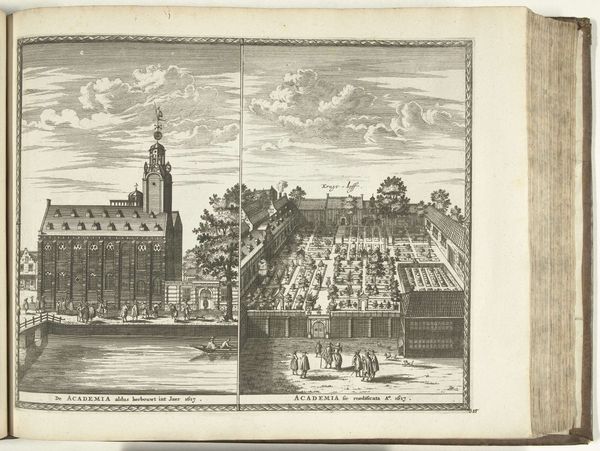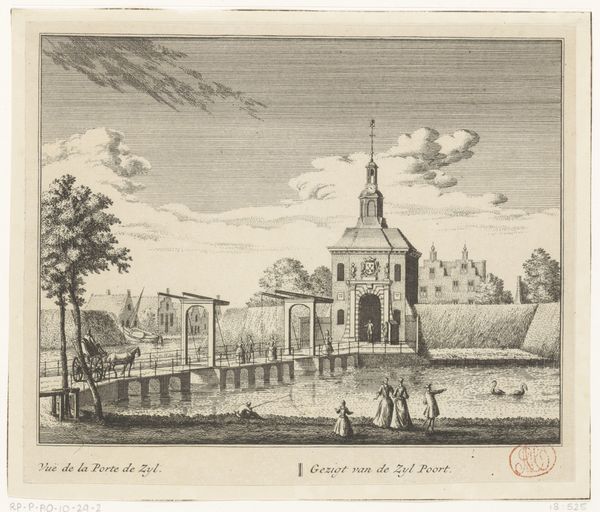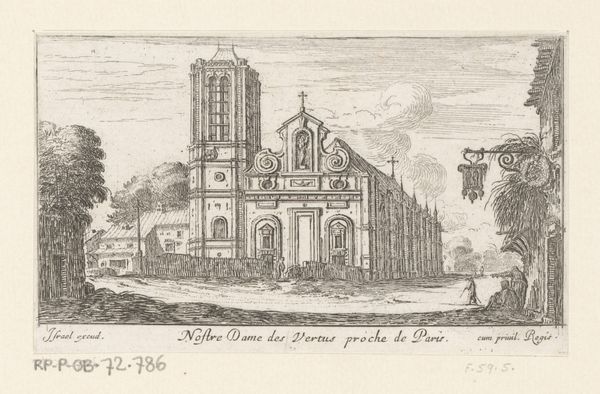
print, engraving, architecture
#
baroque
# print
#
old engraving style
#
landscape
#
cityscape
#
engraving
#
architecture
Dimensions: height 209 mm, width 289 mm
Copyright: Rijks Museum: Open Domain
Curator: This is Giovanni Battista Falda's "Fontana dell'Acqua Paola in Rome," a print dating from between 1653 and 1691. Editor: It’s strikingly formal. The way the stark white of the monument leaps out against the gray, sketched-in sky and surrounding landscape is dramatic. The scene looks inhabited but also imposing and grandiose. Curator: Falda, through his engravings, acted as a visual chronicler of Rome’s urban landscape during the Baroque period. He aimed to capture the grandeur and architectural innovations, making them accessible to a wider public. The Fontana dell'Acqua Paola, constructed on the Janiculum Hill, was an important feat of engineering, revitalizing ancient Roman aqueducts. Falda makes visible this feat through a precise style of architectural depiction. Editor: I can't help but think about whose water this was, and at what cost. While this artwork celebrates progress and innovation, it conveniently leaves out the potential social inequities of resource distribution and control in a rapidly growing urban center. Also, what was the access to public spaces during this era? Who really gets to benefit from monumental works of art like this? I would love to know how accessible these locations are to marginalized communities. Curator: That’s a very important point, this was, after all, a deeply hierarchical society. The aqueduct itself was commissioned by Pope Paul V, and its construction undoubtedly involved the labor of many, yet this print primarily celebrates the achievement of elite architects and patrons. It reinforces power dynamics by portraying a specific vision of urban development – one controlled and curated by the Church and the aristocracy. Falda’s work should therefore be read as an intentional depiction of power. Editor: Right, this makes me think about whose stories are not told, or who gets to determine that the aqueduct becomes associated with ‘progress’? What’s deliberately erased when representing the urban renewal project in this visual manner? These kinds of artworks act like advertisements of power that deserve to be read skeptically. Curator: It makes us recognize the political work involved in building legacies. Thank you for these comments! Editor: It makes us appreciate the complex socio-political dimensions and how such projects mirror urban development during this historical period!
Comments
No comments
Be the first to comment and join the conversation on the ultimate creative platform.
